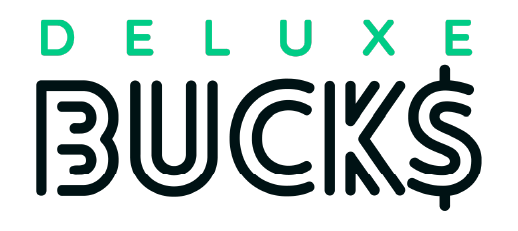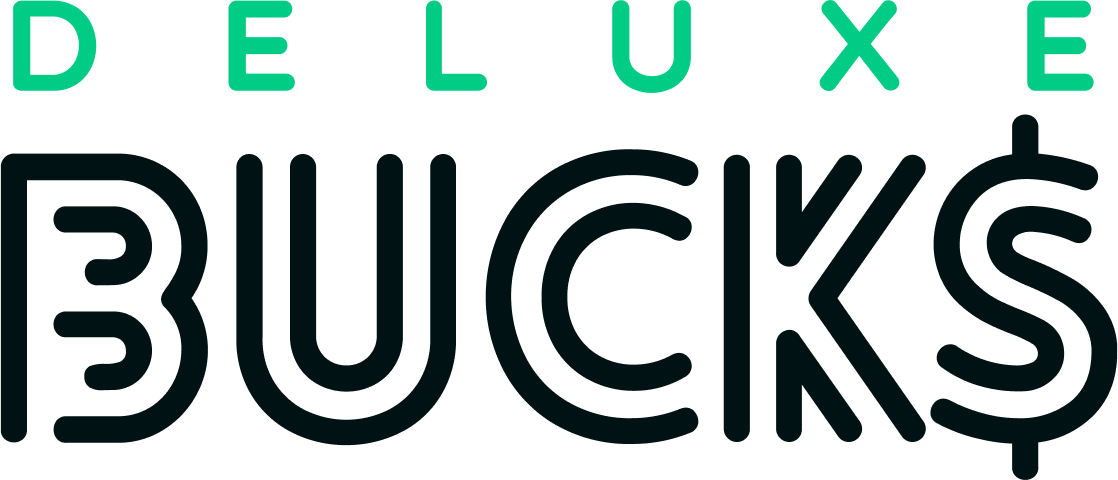As winter comes or the summer sun shines bright, your energy bills might soar. Many Americans struggle with the costs of keeping their homes warm or cool. But there’s help available through LIHEAP assistance. This federal program offers a helping hand to those overwhelmed by utility bills. In FY 2023, LIHEAP got a boost with $6.1 billion in funding1, making homes safe and comfortable throughout the year.
In 2019, only 16% of families who could get help actually did1. This means many might not know that up to $3,000 in aid is possible. LIHEAP makes utility bill help a reality, especially for those with high energy costs, the elderly, people with disabilities, and families with young children.
Key Takeaways
- LIHEAP assistance allocated a significant $6.1 billion in 2023 to support struggling households1.
- Federal heating aid and cooling aid are tailored to families with high energy costs or vulnerable members.
- Energy bill support is not as widely utilized as it could be, with many eligible families not enrolled.
- A maximum of $3,000 could be yours, depending on your state’s utility bill assistance programs.
- The LIHEAP program’s benefits rely on understanding eligibility and application processes.
This article might just change how you see your energy bill worries. It introduces LIHEAP, explaining who it helps and how. Learn how to make the most of this assistance to brighten your home and ease your budget stress.
Understanding LIHEAP Assistance
The Low-Income Home Energy Assistance Program (LIHEAP) helps many Americans. It makes sure energy costs don’t overwhelm them.
What is LIHEAP?
LIHEAP’s main goal is to help those with low incomes handle their energy bills. It provides aid for heating in winter and cooling in summer. This lifts some of the financial load off families. Around 6.7 million households get this support every year for either heating or cooling2.
Who Benefits From LIHEAP?
LIHEAP focuses on helping the most in need. This includes low-income families, the elderly, and the disabled. It especially helps homes where someone could get really sick from being too hot or too cold. LIHEAP is a key support, making sure these families don’t have to pick between staying warm or cool and other essentials3.
LIHEAP Eligibility Requirements
To get LIHEAP, your household income has to be pretty low. It needs to be at or below 150% of the Federal Poverty Level (FPL). This depends on how many people live in your home3. You’ll need to show how much you earn, who you are, where you live, and your recent energy bills4.
Being part of federal programs like SNAP, SSI, or TANF might automatically qualify you. This makes applying easier and cuts down on paperwork4.
To discover more about LIHEAP and how it can lower your energy bills, visit the official LIHEAP FAQs.
Learning about energy assistance programs can really help ease the worry over high utility bills. If you qualify, applying for LIHEAP is a vital step towards better financial health and comfort at home. Every little bit of support makes a difference in handling energy expenses.
How to Benefit from LIHEAP Program Details
The Low Income Home Energy Assistance Program (LIHEAP) offers crucial support. It gives you a clear way to get energy help. If you want to lower your heating and cooling bills, exploring LIHEAP’s benefits and how to apply is smart.
The Application Process for LIHEAP
Starting with the LIHEAP application is the first step to reduce your energy bills. To apply, your income must be 110% to 150% of the Federal Poverty Level or not more than 60% of your state’s median income3. Fall is when applications are usually accepted. Homes with seniors, 60 years old or older, are given priority3.
While waiting for approval, keep paying your utility bills. The review process normally takes about 30 days for regular help and less than 48 hours for emergency cases3. You need to show proof of identity, income, and where you live. Having the correct documents is key for a smooth application4.
Types of Assistance Provided by LIHEAP
LIHEAP offers help with heating and cooling costs and emergency situations. They provide regular benefits to your utility company or fuel dealer yearly3. This makes managing your bills easier. In emergencies like a pending utility shutoff, LIHEAP provides funds quickly, often within 48 hours3.
In states like Michigan, programs like the State Emergency Relief (SER) add more support on top of LIHEAP5. They offer funds for immediate energy needs.
Maximizing Your LIHEAP Benefits
To get the most from LIHEAP, know when and what services are available. Benefits differ by state. For instance, Delaware offers up to $1,852 for heating and $1,000 for cooling each year3. Applying early is wise since funds are given on a first-come, first-served basis3.
Also, look into other programs like the Special Reduced Residential Service Rate for a 20% saving on your utility bills3. If you don’t meet the regular criteria, local nonprofits or programs like the Weatherization Assistance Program might help4.

For more info on applying and benefiting from LIHEAP, check out the LIHEAP fact sheet3. It has detailed advice on eligibility, what help is available, and tips on navigating the program.
Conclusion
The LIHEAP program is crucial for many Americans every year. Nearly 1 in 5 U.S. homes struggle to pay for energy6. This federal help is not just money; it’s a key support against energy poverty. The rules for getting LIHEAP help make sure it goes to those who really need it. This includes the elderly, people with disabilities, and families with young kids, offering up to $3,0007. In 2013, around 5.9 million poor families got heating help, and over 800,000 received cooling assistance from LIHEAP8.
With more people asking for help with energy bills, LIHEAP’s role is crucial. Over half of the low-income families have a hard time with these bills6. They often have to give up basic needs to pay for energy. The pandemic made things worse, causing about $24 billion in unpaid utility bills6. Learning about LIHEAP is more than just paperwork. It’s a vital step for your family’s stability and safety.
By taking action, you can move from difficulty to relief. Contact your local LIHEAP office, make sure your paperwork is right, and fight against the growing energy costs. LIHEAP does more than offer quick help. It promises a better, sustainable future by saving energy. This isn’t just a program. It’s a chance to make life better for you and your family.
FAQ
What is the Low Income Home Energy Assistance Program (LIHEAP)?
Who is eligible for LIHEAP assistance?
How much assistance does LIHEAP provide?
FAQ
What is the Low Income Home Energy Assistance Program (LIHEAP)?
LIHEAP helps low-income families pay for heating and cooling their homes. It offers grants for energy bills to make sure families live in healthy environments. They also help in emergencies related to energy.
Who is eligible for LIHEAP assistance?
Your income must meet federal poverty guidelines to get LIHEAP. Being part of SNAP or Medicaid might automatically qualify you. But, each state has different rules, so it’s best to check locally.
How much assistance does LIHEAP provide?
Families can get between
FAQ
What is the Low Income Home Energy Assistance Program (LIHEAP)?
LIHEAP helps low-income families pay for heating and cooling their homes. It offers grants for energy bills to make sure families live in healthy environments. They also help in emergencies related to energy.
Who is eligible for LIHEAP assistance?
Your income must meet federal poverty guidelines to get LIHEAP. Being part of SNAP or Medicaid might automatically qualify you. But, each state has different rules, so it’s best to check locally.
How much assistance does LIHEAP provide?
Families can get between $1,950 and $3,000 a year from LIHEAP. The money helps with heating, emergencies, and fixing energy issues at home. It aims to lessen energy struggles for qualified families.
How can I apply for LIHEAP?
To apply, reach out to your local LIHEAP office starting October 1 for the heating season. You’ll need to show how much money you make, how many people live with you, and your energy bills. The office will help you with the forms and what else you need to provide.
What types of assistance are offered through LIHEAP?
LIHEAP gives money for heating and cooling, helps in emergencies like the risk of having your power turned off, and pays for repairs to make your home more energy-efficient. Some places also offer help to use less energy.
What constitutes an energy crisis for LIHEAP assistance?
An energy crisis means you’re about to lose your utilities, don’t have heating in winter, or face dangerous conditions. Each state sets its own rules for what counts as a crisis, so check with your local provider.
Are there any special considerations for the elderly or disabled in the LIHEAP program?
Yes, LIHEAP looks out for households with older people, those with disabilities, and families with small children. These groups get priority because they need more energy and are more affected by very hot or cold weather.
How do I maximize my LIHEAP benefits?
Get the most from LIHEAP by applying early, giving correct and full information, and keeping track of your application. Know about all the help you can get, like bill payments and making your home use energy more wisely, and ask for each one.
Can LIHEAP assist with both heating and cooling costs?
Yes, LIHEAP helps with costs for both keeping warm in winter and cool in summer. It supports low-income families to handle these big expenses and stay safe when the weather is extreme.
How often can I receive LIHEAP assistance?
Households that qualify can apply for help from LIHEAP each year. How often and how much you can get depends on the money available from the government, state resources, and your family’s situation.
,950 and ,000 a year from LIHEAP. The money helps with heating, emergencies, and fixing energy issues at home. It aims to lessen energy struggles for qualified families.
How can I apply for LIHEAP?
To apply, reach out to your local LIHEAP office starting October 1 for the heating season. You’ll need to show how much money you make, how many people live with you, and your energy bills. The office will help you with the forms and what else you need to provide.
What types of assistance are offered through LIHEAP?
LIHEAP gives money for heating and cooling, helps in emergencies like the risk of having your power turned off, and pays for repairs to make your home more energy-efficient. Some places also offer help to use less energy.
What constitutes an energy crisis for LIHEAP assistance?
An energy crisis means you’re about to lose your utilities, don’t have heating in winter, or face dangerous conditions. Each state sets its own rules for what counts as a crisis, so check with your local provider.
Are there any special considerations for the elderly or disabled in the LIHEAP program?
Yes, LIHEAP looks out for households with older people, those with disabilities, and families with small children. These groups get priority because they need more energy and are more affected by very hot or cold weather.
How do I maximize my LIHEAP benefits?
Get the most from LIHEAP by applying early, giving correct and full information, and keeping track of your application. Know about all the help you can get, like bill payments and making your home use energy more wisely, and ask for each one.
Can LIHEAP assist with both heating and cooling costs?
Yes, LIHEAP helps with costs for both keeping warm in winter and cool in summer. It supports low-income families to handle these big expenses and stay safe when the weather is extreme.
How often can I receive LIHEAP assistance?
Households that qualify can apply for help from LIHEAP each year. How often and how much you can get depends on the money available from the government, state resources, and your family’s situation.
How can I apply for LIHEAP?
What types of assistance are offered through LIHEAP?
What constitutes an energy crisis for LIHEAP assistance?
Are there any special considerations for the elderly or disabled in the LIHEAP program?
How do I maximize my LIHEAP benefits?
Can LIHEAP assist with both heating and cooling costs?
How often can I receive LIHEAP assistance?
Source Links
- LIHEAP Program – https://link-health.org/liheap-program/
- LIHEAP and WAP- Two Sides of the Same Coin – NASCSP – https://nascsp.org/liheap-and-wap-two-sides-of-the-same-coin/
- Low Income Home Energy Assistance Program (LIHEAP) – https://www.payingforseniorcare.com/resources/liheap_financial_aid
- Low Income Home Energy Assistance Program (LIHEAP) – https://www.investopedia.com/low-income-home-energy-assistance-program-liheap-5179918
- Low Income Home Energy Assistance Program (LIHEAP) State Plans – https://www.michigan.gov/mdhhs/inside-mdhhs/reports-stats/plans-regs/plans-regs/low-income-home-energy-assistance-program-liheap-state-plans
- LIHEAP White Paper | LIHEAP.org – https://www.liheap.org/white-paper
- What is LIHEAP and CEAP Energy Assistance? – Now Power – https://nowpowertexas.com/what-is-liheap-and-ceap-energy-assistance/
- PDF – https://liheapch.acf.hhs.gov/pubs/LCIssueBriefs/leveraging.pdf


